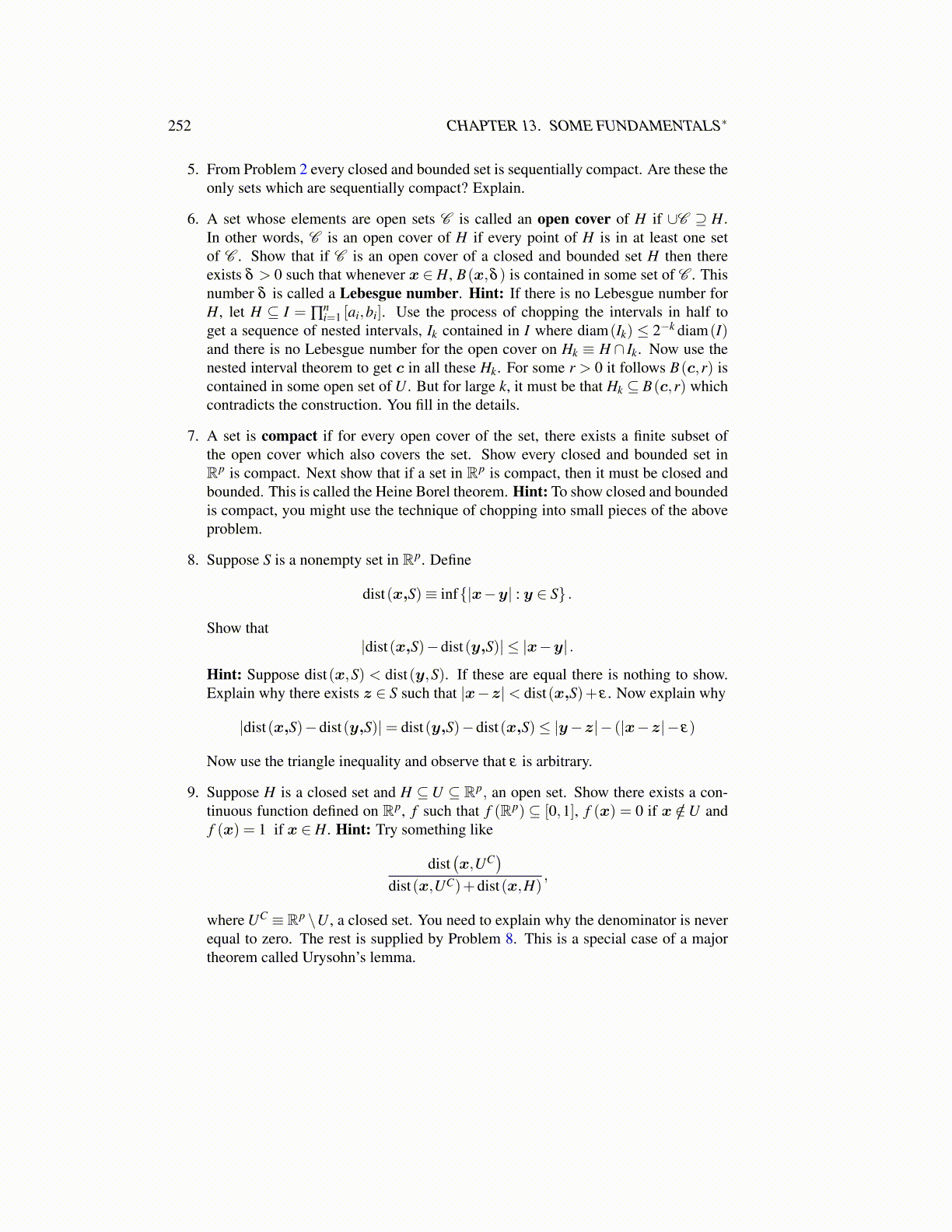
252 CHAPTER 13. SOME FUNDAMENTALS∗
5. From Problem 2 every closed and bounded set is sequentially compact. Are these theonly sets which are sequentially compact? Explain.
6. A set whose elements are open sets C is called an open cover of H if ∪C ⊇ H.In other words, C is an open cover of H if every point of H is in at least one setof C . Show that if C is an open cover of a closed and bounded set H then thereexists δ > 0 such that whenever x ∈ H, B(x,δ ) is contained in some set of C . Thisnumber δ is called a Lebesgue number. Hint: If there is no Lebesgue number forH, let H ⊆ I = ∏
ni=1 [ai,bi]. Use the process of chopping the intervals in half to
get a sequence of nested intervals, Ik contained in I where diam(Ik) ≤ 2−k diam(I)and there is no Lebesgue number for the open cover on Hk ≡ H ∩ Ik. Now use thenested interval theorem to get c in all these Hk. For some r > 0 it follows B(c,r) iscontained in some open set of U . But for large k, it must be that Hk ⊆ B(c,r) whichcontradicts the construction. You fill in the details.
7. A set is compact if for every open cover of the set, there exists a finite subset ofthe open cover which also covers the set. Show every closed and bounded set inRp is compact. Next show that if a set in Rp is compact, then it must be closed andbounded. This is called the Heine Borel theorem. Hint: To show closed and boundedis compact, you might use the technique of chopping into small pieces of the aboveproblem.
8. Suppose S is a nonempty set in Rp. Define
dist(x,S)≡ inf{|x−y| : y ∈ S} .
Show that|dist(x,S)−dist(y,S)| ≤ |x−y| .
Hint: Suppose dist(x,S) < dist(y,S). If these are equal there is nothing to show.Explain why there exists z ∈ S such that |x−z|< dist(x,S)+ ε . Now explain why
|dist(x,S)−dist(y,S)|= dist(y,S)−dist(x,S)≤ |y−z|− (|x−z|− ε)
Now use the triangle inequality and observe that ε is arbitrary.
9. Suppose H is a closed set and H ⊆U ⊆ Rp, an open set. Show there exists a con-tinuous function defined on Rp, f such that f (Rp) ⊆ [0,1], f (x) = 0 if x /∈U andf (x) = 1 if x ∈ H. Hint: Try something like
dist(x,UC
)dist(x,UC)+dist(x,H)
,
where UC ≡ Rp \U , a closed set. You need to explain why the denominator is neverequal to zero. The rest is supplied by Problem 8. This is a special case of a majortheorem called Urysohn’s lemma.